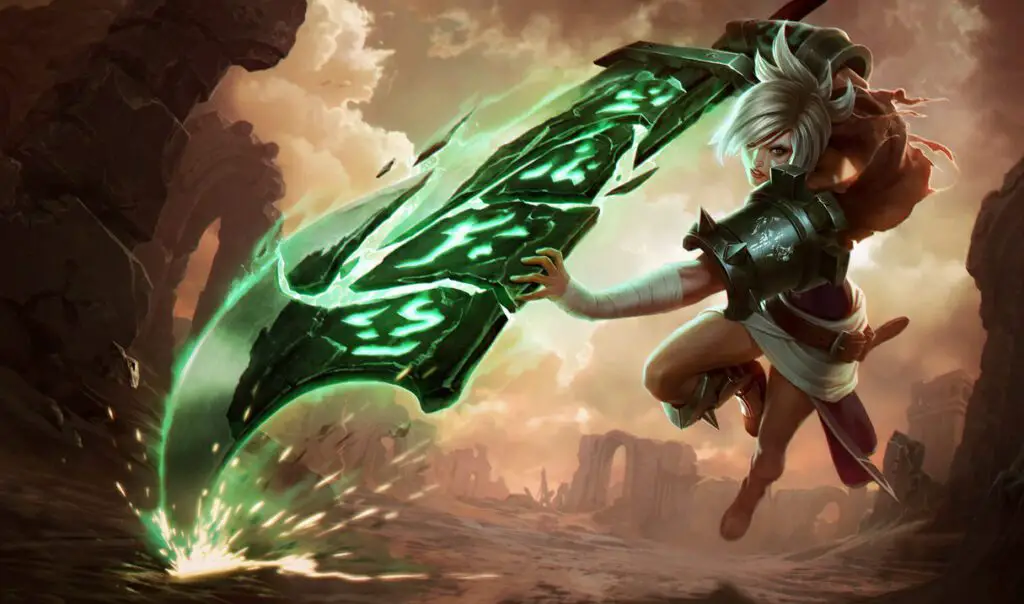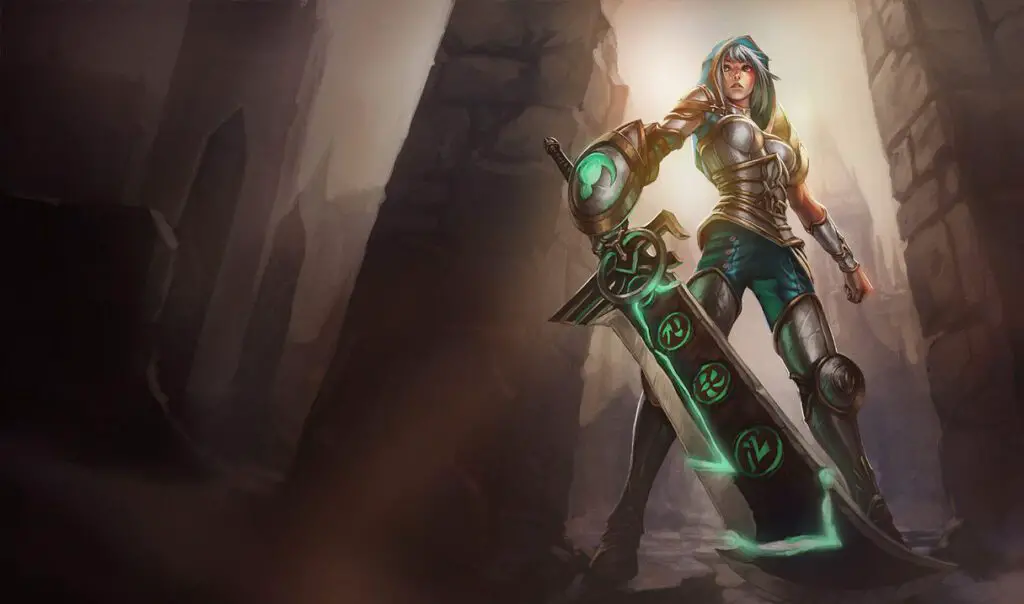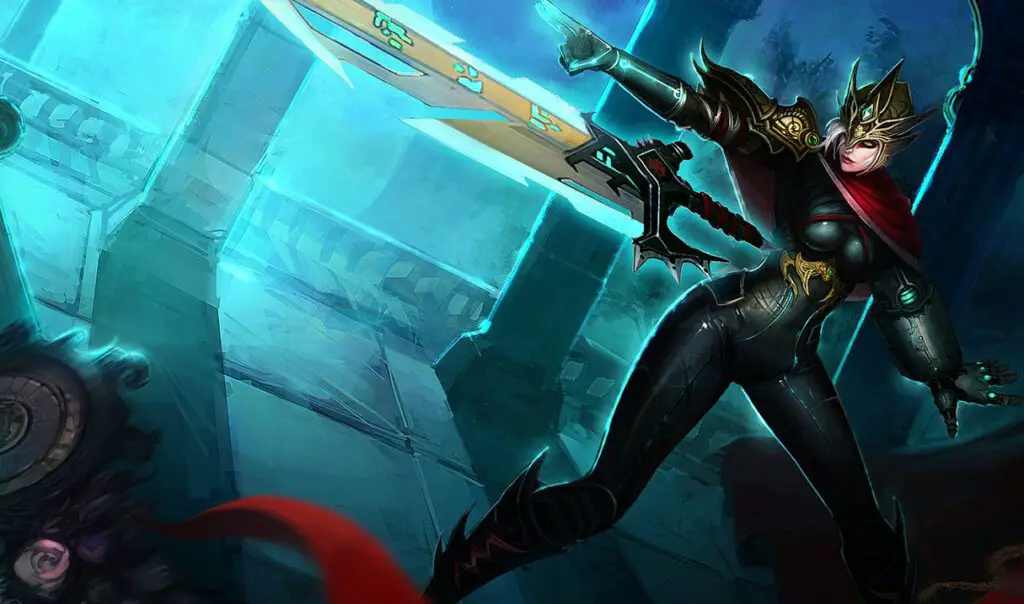
In the realm of League of Legends (LoL), success hinges on mastering the minute mechanics of gameplay. One such subtle skill that separates the novices from the veterans is Animation Canceling. But, what exactly is it?
Introduction to Animation Canceling
Animation Canceling, from a challenger player’s perspective, isn’t just a technique—it’s an art form that significantly affects the game’s dynamics. Its core principle lies in mitigating the ‘downtime’ of a champion’s actions. Think of it as cutting the fat from the meat, focusing only on what contributes to the desired outcome—damage, control, or defense.
In League of Legends, every champion has a series of animations associated with their abilities. These animations, while aesthetically appealing, carry a temporal cost. By using Animation Canceling, a player can interrupt these animations once the game registers the action, allowing the champion to move onto the next command faster.
As a Challenger player, you’ll find yourself needing to exploit every available advantage to outplay your opponents. Animation Canceling allows you to reduce the delay between abilities, increase your overall DPS (damage per second), and even combine abilities in ways that aren’t possible otherwise.
Moreover, it enables a more responsive and fluid control over the champion, which can be invaluable when split-second reactions can make or break your game.
The Role of Animation Canceling in Gameplay
Imagine yourself in the heat of a team fight as a Challenger player. Abilities are being cast left, right, and center. The difference between victory and defeat is a matter of seconds, and every single action counts. This is where Animation Canceling plays a pivotal role.
Each champion’s abilities have a wind-up, action, and wind-down phase, each with its own animation. The wind-up and action phases are crucial as they determine if an ability hits or misses. But the wind-down phase, often, does not contribute to the game’s mechanics—it merely completes the visual cue. Animation Canceling involves issuing another command during the wind-down phase, essentially truncating it.
This technique does more than just speed up your rate of damage. It allows for more efficient kiting, quicker reactions to changing battle conditions, faster clearing of jungle camps, and even potential to outplay your opponent with an unexpected sequence of abilities.
For instance, Riven, a champion known for her animation canceling mechanics, can use this technique to string together a quick combo of abilities and auto-attacks, leaving little room for the enemy to react.
Remember, in the high-stakes environment of the Challenger tier, every millisecond counts. So, an in-depth understanding and utilization of Animation Canceling can give you the upper hand, ensuring you’re always a step ahead of your adversaries.
How Animation Canceling Works in League of Legends


As a Challenger player, the mastery of Animation Canceling is not just an additional feather in your cap—it’s a requirement. Understanding the mechanics behind this technique is your first step to incorporating it into your gameplay.
Basic Principles of Animation Canceling
To begin with, Animation Canceling is not a one-size-fits-all technique. Its execution varies depending on the champion you’re playing, their abilities, and the current game scenario. It’s a high-skill technique that necessitates a combination of knowledge, precision, and intuition.
Timing and Coordination
Timing and coordination are the bedrock of Animation Canceling. This technique revolves around introducing a new command—usually a movement command or another ability—at the right time during an ability’s animation.
In the Challenger tier, players often have similar skill levels, and the margin for error becomes increasingly slim. A mistimed animation cancel could lead to a missed ability, costing you an essential cooldown and potentially a victory. Conversely, a well-executed animation cancel can give you an advantage, providing an unexpected burst of damage or a quick escape route.
Recognizing the Animation Phases
Understanding the different phases of an animation is essential for mastering this technique. Every champion’s action can be broken down into three phases: wind-up, action, and wind-down.
- Wind-up: This phase is the start of the action. It’s usually short but can be crucial for abilities with a cast time.
- Action: The phase where the ability is released or the damage is done. This phase is usually non-negotiable.
- Wind-down: The post-action phase, where your champion returns to their standard position.
Animation Canceling primarily targets the wind-down phase. By introducing a new command during this phase, you cut short the original action’s animation, allowing your champion to move onto their next action quicker.
Benefits of Animation Canceling
For Challenger players, the benefits of Animation Canceling are substantial.
Firstly, it enables faster and more efficient combat sequences. By eliminating unnecessary animation delays, you can execute more actions in the same timeframe. This can lead to an unexpected burst of damage, often catching your opponent off guard.
Secondly, Animation Canceling can enhance your champion’s mobility. By canceling the animation of your attacks, you can move between your auto-attacks more smoothly—a technique often referred to as ‘orb-walking’ or ‘kiting’.
Finally, mastering Animation Canceling allows for more strategic depth and creativity in gameplay. It opens up new possibilities for ability combinations, enabling outplays that could turn a losing battle into a victorious one.
At the Challenger level, these benefits can give you an edge in your climb up the ranks, underlining the importance of mastering this nuanced technique.
Learning Animation Canceling: Step by Step Guide
Even for a seasoned Challenger player, the road to mastering Animation Canceling is paved with continuous learning and practice. Let’s break down this journey into manageable steps.
Simple Animation Cancels to Start With
Starting your Animation Canceling journey begins with grasping the basics—simple animation cancels that apply to most champions. An example of a simple animation cancel that you can start practicing is the ‘auto-attack cancel’. This technique involves issuing a move command immediately after your auto-attack lands. This simple cancel can dramatically increase your champion’s efficiency in farming minions, trading in lane, or kiting enemy champions.
Champion Specific Cancels


Once you’re comfortable with basic animation cancels, it’s time to delve into the specifics of your preferred champions. Each champion in League of Legends has unique abilities, each with its potential animation cancels.
For instance, consider Riven—her kit is rich with animation canceling opportunities, allowing skilled players to chain abilities together rapidly. One of her fundamental cancels is the ‘E-R Cancel,’ where her E ability (Valor) can be used to cancel the animation of her R (Blade of the Exile / Wind Slash).
Invest time in understanding the mechanics of your preferred champions. Look up guides, watch high-level gameplay, and try to understand how animation cancels are incorporated into their playstyle.
Using the ‘S’ Key for Animation Cancels
The ‘S’ key, default bound to the ‘Stop’ command in League of Legends, is an overlooked yet powerful tool in a player’s arsenal, especially when it comes to mastering Animation Canceling. Let’s delve into how it can be utilized.
The Role of the ‘S’ Key in Animation Canceling
The ‘Stop’ command, activated by pressing the ‘S’ key, does precisely what its name implies—it makes your champion stop all current actions. This includes movement, attacks, and, crucially for our discussion, animations. By strategically using the ‘Stop’ command, players can effectively cancel ongoing animations, granting them greater control over their champion’s actions.
How to Use the ‘S’ Key for Animation Canceling
Understanding the potential of the ‘S’ key for Animation Canceling is one thing, but mastering its use is another. The key lies in timing. Pressing ‘S’ too early might lead to canceling an ability prematurely, resulting in the ability not going off at all. Pressing it too late might mean not gaining any advantage from the cancel.
An easy place to start practicing the use of the ‘S’ key for animation canceling is with auto-attacks. Try attacking a minion or a jungle monster, then press ‘S’ as soon as the attack lands. If done correctly, you will cancel the latter part of the auto-attack animation, allowing your champion to start their next action more quickly.
Incorporating the ‘S’ Key into Advanced Gameplay
While it might seem straightforward, incorporating the ‘S’ key into your animation canceling repertoire opens up a new level of advanced gameplay.
Consider a scenario where you’re playing an ADC, and you’re kiting an enemy. Traditionally, you would have to issue a move command after every attack to maintain distance. However, with the ‘S’ key, you can simply press ‘S’ after your attack lands, then immediately issue the move command. This can make your kiting more fluid and responsive.
Do remember that not all animations can be canceled with the ‘S’ key. Some abilities have a “locked” animation that cannot be stopped once it’s initiated. Thus, the ‘S’ key is not a universal tool for Animation Canceling but rather another instrument in your toolkit to maximize your gameplay efficiency.
Advanced Animation Canceling Techniques
As you climb the ranks and face more formidable opponents, you will need to integrate more advanced animation cancels into your arsenal. These techniques often involve chaining multiple animation cancels together or using animation cancels to optimize a champion’s ability combo.
For example, Riven’s ‘Fast Q Combo’ is an advanced technique that involves canceling the animation of her Q ability (Broken Wings) with a move command and then canceling the move command with an auto-attack. This creates a swift and deadly combo that outputs maximum damage in the shortest possible time.
Using Animation Canceling in Team Fights
Understanding the technique of animation canceling and its usage in actual combat, particularly team fights, are two different things. In the chaos of a team fight, executing a perfect animation cancel requires not just skill but calm and precise decision-making. Your ability to use animation cancels effectively in these high-pressure situations can turn the tide of the battle.
Mastering Animation Canceling with Practice
Remember that the mastery of Animation Canceling, like any skill, comes with practice. It’s not enough to understand it theoretically—you must ingrain it into your muscle memory through repetition.
Use the game’s Practice Tool to get a feel for your champion’s animation cancels in a stress-free environment. Then, try to incorporate them into your regular games. Don’t be discouraged by initial failures; even Challenger players miss their animation cancels from time to time.
Also, keep in mind that knowing when to animation cancel is just as important as knowing how to do it. Not every situation calls for an animation cancel. Understanding the game, your champion, and your opponents will help you recognize these situations.
Embrace the process and keep refining your skills. Before you know it, you’ll be animation canceling like a pro.
The Impact of Animation Canceling on Professional Play
In the professional League of Legends scene, Animation Canceling transcends the realm of mere technique, becoming an absolute necessity. The upper echelon of play is characterized by minimal margins for error, and mastering animation canceling gives pro players an edge, allowing them to exploit every available advantage.
Famous Instances of Animation Canceling
In the annals of professional League of Legends history, there have been several instances where Animation Canceling has proven pivotal, becoming the difference between victory and defeat.
Consider, for example, Lee Sin, a champion renowned for his high-skill cap and potential for flashy, high-impact plays. A famous instance of Animation Canceling in pro play involves the ‘Ward Hop Kick’—a combo that uses Lee Sin’s W ability (Safeguard) to jump to a ward and his R ability (Dragon’s Rage) to kick an enemy champion towards his team.
In one memorable professional match at Worlds 2021 EDG JieJie, was playing Lee Sin and placed a ward behind the enemy ADC, used Safeguard to jump to the ward, then quickly canceled the animation of Safeguard with Dragon’s Rage. This technique caught the enemy ADC off-guard, knocking them into Lee Sin’s team, securing a crucial kill, and ultimately swinging the game’s momentum in their favor.
How Professionals Utilize Animation Canceling
Professional players are known for their dedication to perfecting their gameplay, often investing countless hours in mastering every facet of their chosen champions. Animation Canceling is a crucial part of this.
In 1v1 duels, Animation Canceling can enable quick, unexpected bursts of damage, giving professionals the edge needed to secure a kill. For instance, a perfectly executed ‘Fast Q Combo’ with Riven can surprise an opponent with its swift damage output, often deciding the outcome of the duel.
In larger team fights, Animation Canceling can allow a player to maximize their champion’s efficiency, whether it’s by dishing out more damage, peeling for their teammates more effectively, or executing a game-changing crowd-control ability just in the nick of time.
Furthermore, Animation Canceling can be crucial during objective control, whether it’s securing dragons, barons, or turrets. Here, the difference between an auto-attack animation canceled correctly or not could determine who gets the last hit on a crucial objective, thus affecting the entire game’s course.
Overall, the importance of Animation Canceling in professional play cannot be overstated. It’s one of the many tools that differentiate a good player from the best—the hallmark of a true professional.
Challenges and Drawbacks of Animation Canceling
As a Challenger player, I can assure you that mastering Animation Canceling is no easy feat. This complex technique comes with its own set of challenges and drawbacks, which we must acknowledge and overcome to truly harness its power.
The Learning Curve
To many players, the path to mastering Animation Canceling seems steep, and indeed it is. This advanced technique requires not only a deep understanding of your chosen champion and their abilities, but also precise timing and quick decision-making. These are skills that aren’t necessarily easy for a beginner to pick up.
Understanding the concept of Animation Canceling is one thing; applying it in the heat of a match is another. The difference between a successful and failed cancel often boils down to fractions of a second—a level of precision that demands significant practice to achieve.
Moreover, every champion in League of Legends has their own unique set of animations and cancels. Thus, the learning curve for Animation Canceling can feel like starting from scratch with every new champion you pick up.
Potential Risks of Animation Canceling
While Animation Canceling provides immense benefits when executed correctly, it does come with risks that players should be aware of.
One of the primary risks is mistiming an animation cancel. If you cancel an animation too early, you risk not only failing to execute the cancel but also not executing the initial ability, which could result in a wasted cooldown and a lost opportunity for damage or crowd control. In the worst-case scenario, this could cost you a duel, a team fight, or even the game.
Moreover, while Animation Canceling can increase your action speed, it also increases the demand for your attention and concentration. Balancing your focus between Animation Canceling and other crucial aspects of gameplay, such as map awareness and communication with your team, can be a challenge, especially for players new to the technique.
Despite these challenges and drawbacks, the potential benefits of Animation Canceling make it a technique worth pursuing for any player aiming to climb the ranks in League of Legends. It’s a long journey, but as a Challenger player, I can attest that it’s worth every step.
Recap and Key Takeaways
Animation Canceling is a potent technique in League of Legends that can drastically improve a player’s efficiency and effectiveness. While it requires practice and precision, the payoff can be significant, enhancing your gaming experience and potentially leading to more victories on the battlefield.
FAQ’s
A1: Animation Canceling is an advanced technique in LoL that allows players to reduce the time wasted during a champion’s animation. This increases the speed and efficiency of a player’s actions, providing a competitive advantage.
A2: Animation Canceling works by issuing a new command at the right moment during an animation, specifically after the ‘action’ phase, to cut short the unnecessary ‘wind-down’ phase and start the next action immediately.
A3: Mastering Animation Canceling requires understanding of your champion’s abilities, precise timing, and lots of practice. You can start by learning simple animation cancels specific to your champion, then move on to more complex cancels.
A4: Yes, if Animation Canceling is performed incorrectly, it can lead to missed abilities or wasted cooldowns. It also requires a deep understanding of champion mechanics and can be challenging to master for beginners due to its steep learning curve.
A5: Professional players often dedicate countless hours to mastering Animation Canceling for their specific champions. It gives them an edge in duels and team fights, and can have a decisive impact on objective control and overall game outcome.
